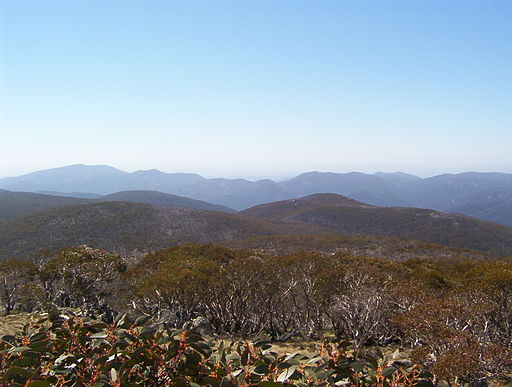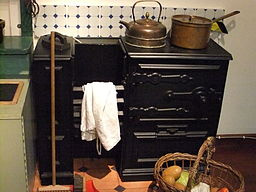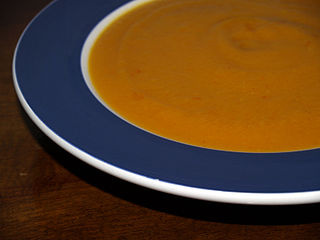Cooking the book....
With the first chapters of Part Two of the new book fairly under way, I've been having an amusing time teaching my heroine how to cook. In particular, this week, a delicious version of pumpkin soup.

Pumpkins, by Harald Bischoff
It's been interesting, in fact, to discover how the emphasis in this section has shifted from the soldier-settler husband Bertie, towards his wife. I hadn't knowingly intended that, but I'm glad it's happened.
The unconscious seems to work these things out before you begin the act of writing; and as I remarked in my post 'The Angle', there is a truth, a 'rightness' to every tale that the story-teller can manipulate to a certain point – but beyond which the whole thing will be false and evaporate into the literary sands.
Literary tests
The test for the author is whether the narrative flow runs smoothly and naturally. And so far it has for Mrs E- M- (Em, as I’ll now call her in these columns).
The decision, as I was cleaning out the kitchen cupboard, to open the section with her arriving at the shearer's hut in the high country where she was supposed to set up home, turned out to be the correct one. To date, the writing has all followed from there...

Namadgi Walk. By SA 2.5. Wikipedia Com
Now, the thing to know about Em is that she was by no means a natural pioneer. On the contrary. She'd been born into an upper middle-class English family, with connections through her mother to the landed gentry and even some of the prominent aristocratic houses.
For most of her life, at home and at school, she had servants around her to do the household tasks. A cook to prepare the meals. Maids to clean and make the beds and darn the clothes. Someone to do the laundry.
Even when she married her farmer and was faced with many more domestic responsibilities, she usually was able to find someone to help her with the heavy laundry and housework.
Booking the cook...
But now, faced with a hut, a husband and four children in the Australian outback, she was literally thrown onto her own resources. There was nobody to help her, apart from a roustabout to chop the kindling wood and milk the cow. Everything else ... the cooking in the cast iron range and over an open fire, the washing up, the laundry, mopping, moping and kitchen gardening, was all up to Em. And she hated it!

Kitchen range, by Green Lane
Oh, she knew how to cut a dainty sandwich and bake a scone for afternoon tea. She could stitch a handkerchief and embroider a doily for the table.
But stews and roasts and soups and baked puddings and bread and apple pies had not hitherto been part of her repertoire, and had to be learned pretty much from the basics.
It's often a nice idea for an author trying to recreate some feeling of authenticity from the past to have a look at the contemporary local newspapers. It's intriguing how much even small snippets scattered like raisins in the literary mix, can add to that sense of time and place.
Em has been no different; and I've no doubt that in her attempts to conquer the demons of the kitchen she drew plentifully on the column of “Household Hints” published each week in her local rag.
To keep butter fresh, place in clean pots and surround with charcoal ...
To prevent eggs from bursting while boiling, pierce one end with a needle before placing in the water ...
If your range has a slide in the top, keep this open except when you are using the oven or want the water to heat quickly....
Pumpkin soup...
Now, it being cold midwinter over here, one of the dishes Em would certainly have been learning to cook on her range was that Australian staple – the New World staple – pumpkin soup. And to encourage her, I made a pan of it myself.
Personally I've always found the basic dish a bit too sweet, too cloying for my taste. I've seen recipes for it using cumin, but I don't like cumin. A pinch of saffron, perhaps, if that's to your fancy.
There's a version online for pumpkin, apple and thyme soup, and another for Italian chestnut, pumpkin and chickpeas...
Roasted pumpkin soup for Christmas starters, and a special Haitian Freedom Soup for New Year's Day – said to derive from the days when slaves were not allowed to wear red or yellow garments (those colours being reserved for their masters).
Soupe du soleil...
But of all the varieties of pumpkin soup, the one I like best is another Latin American one called, in the vernacular, Soup of the Sun. Pumpkin and tomato. If the pumpkin's too sweet for me, and the tomato too acid for my wife, like Jack Sprat we combine the best of both and – well – we lick our platters clean.
So that’s what I taught Em to make this week for her family. And being a fair sort of a cook, I thought you might like to try it too.
Soup of the Sun
Ingredients:
* Butternut, Japanese or other favourite pumpkin, peeled, seeded and cut into small pieces.
* Six ripe tomatoes, skinned and chopped; or tin of diced tomatoes.
* A chopped potato, onion, stick of celery, crushed clove of garlic, salt, pepper, pinch of powdered cloves and allspice, handful of fresh herbs (thyme, marjoram, chives) or sprinkle of mixed herbs, a few chilli flakes if desired.
* A splash of white wine if you wish. Milk to thin down if required.
Method:

Peel and cut the vegetables. Place in a soup pan with the herbs and spices, and cover with water or water and chicken stock with a splash of white wine (chardonnay or sauvignon). Bring to the boil and simmer gently for about 45 minutes until cooked, stirring occasionally.
Pumpkin Soup, by cyclonebill
Break the soup down with a potato masher if you want to retain some texture, or purée it in the blender. Correct the seasoning if necessary and serve hot with a little fresh cream if preferred and fresh herbs on top. If the soup is too thick, it can be thinned with a little milk.
Crusty bread on the side. Of course.
There’s not a lot in the literature about pumpkin soup, but here are a few sites:
Pumpkin Soup, children’s book by Helen Cooper http://earlyliteracycounts.blogspot.com.au/2010/11/book-of-day-pumpkin-soup.html
Haiku: http://area17.blogspot.com.au/2013/03/a-pinch-of-saffron-in-pumpkin-soup.html
Haiti soup (Joumou) on 1 January: http://renewal4haiti.org/blog/2011/1/1/haitian-freedom-haitian-pumpkin-soup-recipe-included.html
Photo credits:
Pumpkins: by Harald Bischoff (Own work) [GFDL (http://www.gnu.org/copyleft/fdl.html) or CC-BY-3.0 (http://creativecommons.org/licenses/by/3.0)], via Wikimedia Commons
Namadgi walk: By Dfrg.msc (Own work) [CC-BY-SA-2.5 (http://creativecommons.org/licenses/by-sa/2.5)], via Wikimedia Commons.
Kitchen Range, Hereford Museum and Art Gallery: By Green Lane (Own work) [GFDL (http://www.gnu.org/copyleft/fdl.html) or CC-BY-SA-3.0-2.5-2.0-1.0 (http://creativecommons.org/licenses/by-sa/3.0)], via Wikimedia Commons
Pumpkin soup: By cyclonebill (Græskarsuppe med chili) [CC-BY-SA-2.0 (http://creativecommons.org/licenses/by-sa/2.0)], via Wikimedia Commons
